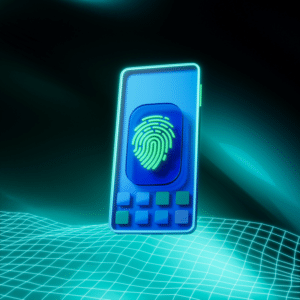By: Jonathan Taylor
Border security stands at a critical juncture, faced with an evolving landscape of challenges that demand innovative solutions. The rise of global travel, trade, and migration has underscored the need for efficient and effective border control measures. In this context, the fusion of technology and diversity emerges as a beacon of promise, offering a path forward that is both secure and inclusive.
Exploring the transformative power of integrating cutting-edge technology requires diverse perspectives in the realm of border security. From advanced biometrics to AI-driven analytics, the tools at disposal are more sophisticated than ever. Yet, to fully realize their potential, a diverse workforce must be embraced, one that reflects the complexity of the modern world.
Harnessing Technology for Enhanced Border Surveillance
The landscape of border surveillance is undergoing a profound shift, propelled by advancements in technology that promise unprecedented capabilities. Drones, powered by sophisticated AI algorithms, now soar over borders, providing real-time monitoring and intelligence gathering. Biometric systems, from facial recognition to fingerprint scanning, offer a precise and efficient means of identity verification.
These technological marvels bring a host of benefits to border security. Improved detection capabilities mean that illicit activities, from smuggling to human trafficking, can be intercepted with greater precision and speed. Rapid response times are now within reach, crucial in scenarios where every second counts.
Embracing these innovations, concerns regarding privacy and ethics come to the fore. The collection and utilization of vast amounts of personal data raise valid questions about individual rights and the potential for misuse. Striking a balance between security imperatives and civil liberties is a challenge that demands careful consideration.
The Role of Diversity in Border Security
Diversity within border security agencies is not merely a matter of representation—it is a strategic imperative that enhances the ability to navigate the complexities of a globalized world. At its core, diversity fosters cultural understanding and effective communication, essential pillars in building trust and cooperation across borders.
“A diverse workforce brings a multitude of perspectives to the table, each offering a unique lens through which to identify and mitigate security threats,” says an executive from Securiport, a leader in border security. “From language skills to cultural insights, these diverse perspectives serve as invaluable assets in an increasingly interconnected landscape.”
Successful diversity initiatives within border security agencies serve as beacons of progress. They demonstrate how inclusivity can lead to tangible improvements in operations and outcomes. By fostering an environment where individuals from various backgrounds can contribute their expertise, these initiatives not only strengthen the effectiveness of security measures but also enhance the legitimacy of border control efforts.

Integrating Technology and Diversity for Comprehensive Border Protection
The synergy between technological innovation and diverse workforce strategies offers a pathway to a more resilient and effective border security framework. When cutting-edge technology is complemented by a workforce that embodies diverse perspectives, the result is a comprehensive approach that enhances the ability to address evolving threats. This synergy is not merely additive; it creates a multiplicative effect where the strengths of technology and human diversity amplify each other, leading to innovative solutions and improved operational outcomes.
Technological advancements in areas such as artificial intelligence, biometric identification, and advanced surveillance systems have revolutionized border security. These technologies enable faster and more accurate identification of threats, streamline processes, and enhance overall security measures. For instance, AI-driven analytics can process vast amounts of data in real-time, providing border security personnel with actionable intelligence that was previously unattainable. Similarly, biometric systems, such as facial recognition and fingerprint scanning, offer robust methods for verifying identities and preventing unauthorized access.
However, the true potential of these technologies is realized when they are integrated with a diverse workforce. A diverse team brings a wide range of perspectives, experiences, and problem-solving approaches, which are crucial in addressing the complex and dynamic nature of border security challenges. Employees from different cultural backgrounds, linguistic capabilities, and professional experiences can offer unique insights that enhance the effectiveness of technological solutions. For example, individuals who understand local customs and languages can better interpret data and interact with local populations, ensuring that security measures are both effective and culturally sensitive.
Challenges persist in the path towards full integration. These range from technical hurdles to cultural shifts within organizations. One of the primary technical challenges is ensuring interoperability between various technological systems and platforms. Border security operations often involve multiple agencies and jurisdictions, each using different technologies and protocols. Achieving seamless integration requires robust standards and frameworks, as well as significant investment in infrastructure and training.
Looking Ahead: Future Trends and Considerations
For policymakers and security agencies, the road ahead presents both challenges and opportunities. Embracing a proactive stance towards technology adoption is essential, ensuring that investments align with the evolving nature of threats. Fostering international cooperation and information sharing will be pivotal in addressing transnational challenges that transcend borders.
The future of border security rests on a foundation of technological innovation, diverse perspectives, and strategic foresight. By staying attuned to emerging trends, adapting to geopolitical shifts, and collaborating on a global scale, a future where borders are not barriers but gateways to security and prosperity for all can be forged.
Looking ahead, the path forward is clear: continued investment in research and development is essential. As technology continues its rapid evolution, staying ahead of the curve is not just an option but a necessity. The potential of AI, biometrics, and other emerging technologies must be embraced to bolster defenses and enhance capabilities.
The imperative of diversity cannot be overstated. A workforce that mirrors the diversity of the communities it serves brings a richness of experience and understanding that is indispensable in navigating the complexities of the interconnected world.
In this ever-changing landscape, integrated approaches that seamlessly blend technology and diversity hold the key to shaping the next generation of border security. It is a future where borders are not barriers but gateways to cooperation and mutual understanding.
Published by: Holy Minoza





